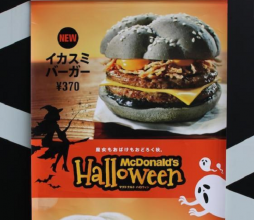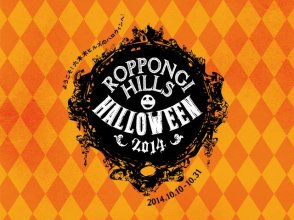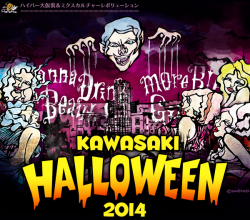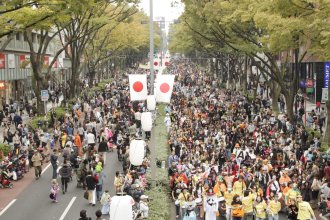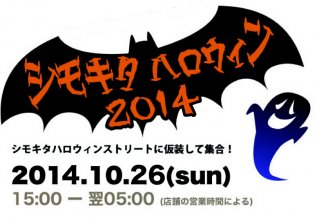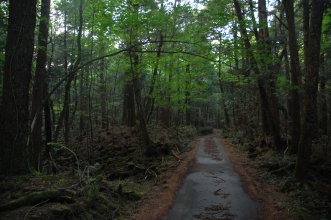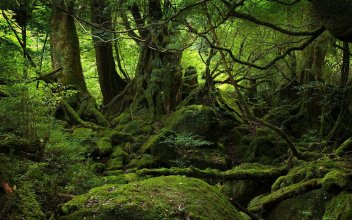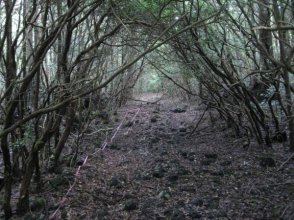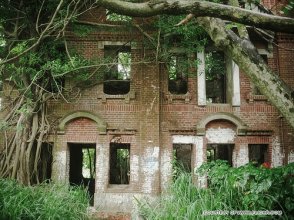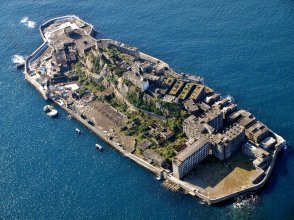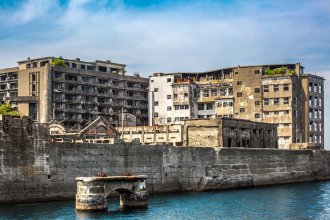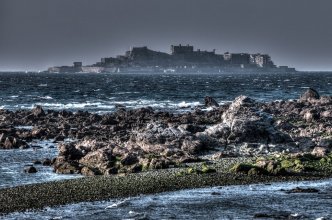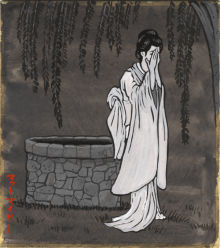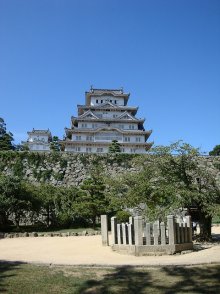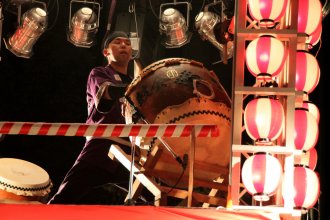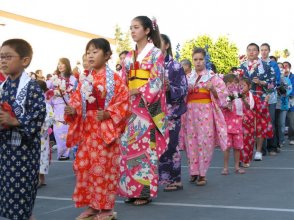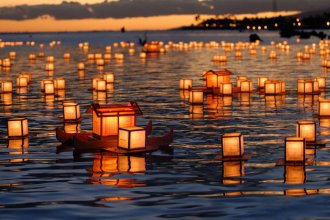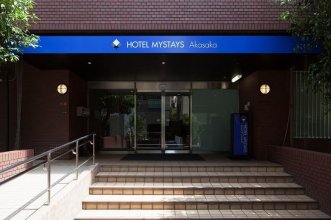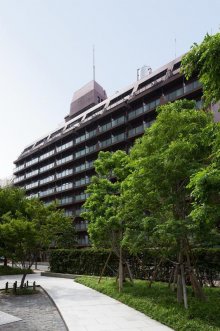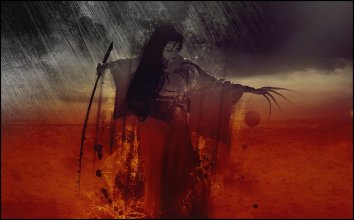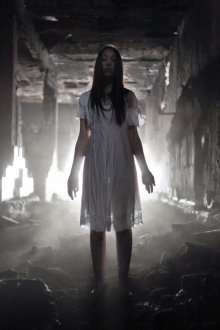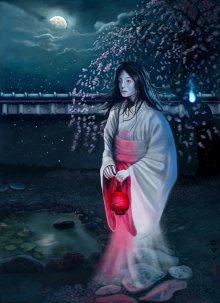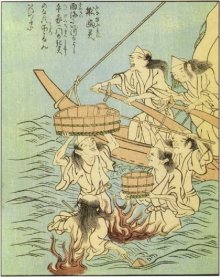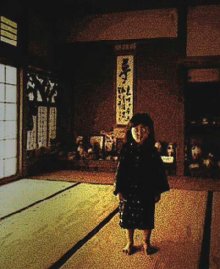Halloween events in Japan and Okinawa
Japan
HALLOWEEN FESTA IN MISAWA (Aomori prefecture): Oct. 17, 11 a.m.-5 p.m., Halloween parade and costume contest and more at Misawa Arcade-Shopping Mall; 0176-53-2175.
YOKOHAMA YAMANOTE WESTERN-STYLE BUILDINGS HALLOWEEN (Kanagawa prefecture): Oct. 17-31; Oct. 25, 10 a.m.-4 p.m., Halloween Walk starts at Yamate Western-Style Building and only costumed children can participate; 045-663-5685.
KAWASAKI HALLOWEEN FESTIVAL 2015 (Kanagawa prefecture): Oct. 24 & 25, kids’ costume parade with parents from Ginza to LA CITTADELLA at noon, 1:30 & 3 p.m. Sat.; Halloween parade for ages 6+ wearing costumes at JR Kawasaki Station 2:30-3:45 p.m. Sun., along with Halloween party, costume contest, film festival and more; 044-233-1934.
ODAIBA HALLOWEEN PARK (Tokyo): Oct. 24 & 25; parade with pop artists 1-2 p.m., along with live performances such as Kyary Pamyu Pamyu, May J., Angela, HoneyWorks, Garnidelia, Fumika, Tempura Kids, Flow, Glim Spanky, Charisma.com and more at T-Spook Rooftop Stage of Aqua City Odaiba, 7th floor, one-minute walk from Daiba Station on Yurikamome (monorail) or six-minute walk from Tokyo Teleport Station on Rinkai Line; 1,000 yen for ages 6+ in costume for the Halloween parade, free for live performances.
HARAJUKU OMOTESANDO HELLO HALLOWEEN PUMPKIN PARADE 2015 (Tokyo): Oct. 25, 1-2:15 p.m.; parade by 1,000 children ages 12 & younger along Harajuku Omotesando Street; attractions nearby; JR Harajuku Station or Omotesando Station on Ginza/Chiyoda lines; registration required at tinyurl.com/owpdkf8; 1,000 yen per child; 03-3406-0988.
SHIMOKITA HALLOWEEN 2015 (Tokyo): Oct. 25, 3 p.m.-5 a.m.; kids’ Halloween costume contest 4-5 p.m., followed by parade of 500 people on streets near Shimokitazawa Station on Keio Line; Halloween parties run at affiliated restaurants until 5 a.m.; 1,000 yen includes one drink; 03-3418-5986.
ROPPONGI HALLOWEEN 2015 (Tokyo): Oct. 25, 1-5 p.m.; parade in costume as movie characters from Roppongi Middle School, Keyakizaka, Roppongi Intersection, Stars and Stripes Street and National Graduate Institute for Policy Studies; 1,500 yen for Trick or Treat, 2,000 yen for parade and Trick or Treat.
IKEBUKURO HALLOWEEN COSPLAY (DRESS-UP) FEST (Tokyo): Oct. 31-Nov. 1, 10 a.m.-6 p.m.; more than 10,000 people at a Halloween party that includes stage events noon-5 p.m., cosplay parade on Sunshine Street 2-3 p.m. near East Exit of JR Ikebukura Station; 500 yen for cosplay participants, includes using dressing room and locker; 03-3985-8311.
SHIMOKITA KIDS HALLOWEEN 2015 (Tokyo): Oct. 31, noon-3 p.m.; 2,000 kids ages 5 & younger in costume Trick or Treat in shops identified on a map near Shimokitazawa Station on Odakyu Line; 1,000 yen (guardian required).
HALLOWEEN AT SEIBU AMUSEMENT PARK (Saitama prefecture): Through Oct. 31; attractions including a dog fashion show, estimating pumpkin’s weight compared with your dog 10 a.m.-5 p.m. Oct. 10-12, 30-minute parade 4:45 & 5:45 p.m. Oct. 31 at Seibu Amusement Park; Seibu Yuenchi Station or Yuenchi-nishi Station on Seibu Shinjuku Line; 3,300 yen adults, 2,800 yen children, 2,900 yen adults, 2,500 yen children with dress-up; 0429-22-1371.
TOKYO DOME HAPPY HALLOWEEN: Through Nov. 1; attractions such as hunting pumpkins during rides, free face-painting 11 a.m.-6 p.m. Oct. 26-30 & 10 a.m.-6 p.m. Oct. 31, and kids Halloween parade 11 a.m.-noon & 2-3 p.m. Oct. 31; free admission, one-day passport for rides is 1,300 yen ages 3-5, 2,100 yen ages 6-11, 3,400 yen ages 12-17, 3,900 yen ages 18+, 2,600 yen ages 3+ 5 rides (2,100 yen Oct. 10-Nov. 1).
DISNEY HALLOWEEN (Chiba prefecture): Through Nov. 1; 40-minute parade twice daily with more than 90 Disney-costumed characters on seven floats at Disneyland and 25-minute performances by 120 Disney-costumed characters on five barges three times daily at DisneySea; Tokyo Disneyland, two-minute ride from Resort Gate Station/Maihama Station, JR Keiyo Line; Tokyo DisneySea: three-minute ride from Resort Gate Station/Maihama Station, JR Keiyo Line.
UNIVERSAL STUDIOS JAPAN — HALLOWEEN (Osaka): Through Nov. 8; join in the daily Halloween costume parade, go trick-or-treating and experience Halloween Horror Night – “Trauma,” “Chucky’s Horror Factory 2,” “The Night Killer,” “Alien vs. Predator,” “Biohazard The Real 3,” and more 6 p.m. Fri.-Mon.; Universal City Station on JR Yumesaki-Line; 06-6465-3000.
Okinawa
MOON ROSES HALLOWEEN NIGHT DREAM: Oct. 24, 7 p.m.; bellydancing performed at Ashibina Okinawa Citizens’ Hall (small); 2,500 yen adults, 1,000 yen kids for advance tickets; 090-3141-1133.
RISONARE KOHAMAJIMA HALLOWEEN SPECIAL: Through Oct. 31; attractions including night illumination on the private beach and more; 10-minute ride from Kohamajima Port after taking a 25-minute high-speed ferry ride from Ishigaki Islands; 0980-84-6300.
HAPPY HALLOWEEN KANUCHA RESORT: Through Oct. 31; includes Halloween 3-D Projection Mapping Theater at the Garden Pool area 8-9 p.m., along with Halloween photo stage; 098-869-5575.
PUMPKIN PANIC 2015: Oct. 31, 7-11 p.m.; biggest Halloween party on Okinawa, featuring group photo contest and group costume contest on Halloween; Otoichiba Music Town 3rd Floor; 3,000 yen (all you can drink); 090-5937-7154.
OKINAWA OMOSHIRO OBAKEYASHIKI (HAUNTED HOUSE): Through Nov. 1, 11 a.m.-9:30 p.m.; five-minute walk from Makie Station; 1,200 yen adults, 1,000 yen junior and senior high school students, 700 yen children, 200-300 yen discounts for Okinawa residents; 098-943-6244.
